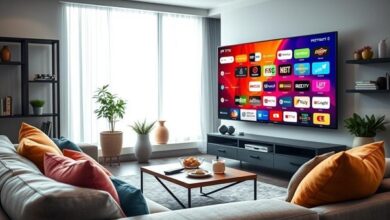The Hidden Science of How Rooms Change Sound

The acoustic fingerprint of a space is as unique and defining as its visual architecture, shaping every sound that enters it through a complex interplay of reflection, absorption, and resonance that transforms simple audio into rich, dimensional experiences. Understanding how sound behaves in different environments represents the difference between amateur recordings that sound flat and lifeless, and professional productions that transport listeners into believable, three-dimensional worlds.
In the intimate confines of a small recording studio, sound waves have limited room to travel before encountering walls, creating a controlled acoustic environment where every surface decision matters enormously. The short reflection paths mean that even minor changes in wall materials or furniture placement can dramatically alter the room’s sonic character. Sound designers working in these spaces often deal with standing waves—resonant frequencies that build up at specific points in the room, creating uneven frequency response that can make certain notes unnaturally loud or quiet. Professional studios combat this through careful acoustic treatment, using absorption panels, diffusers, and bass traps to create a neutral listening environment where sounds can be heard without the room’s acoustic signature interfering.
As spaces grow larger, the behavior of sound becomes increasingly complex and unpredictable. A medium-sized auditorium introduces longer reflection paths, creating the first noticeable delays between direct sound and its reflections. These early reflections—arriving within the first 50 milliseconds after the direct sound—can enhance clarity and fullness when properly controlled, or create muddy, indistinct audio when the acoustic design fails. The ceiling height becomes crucial here, as sounds reflecting off high ceilings create vertical acoustic dimensions that can either support or compete with the primary audio source.
Concert halls represent the ultimate expression of acoustic architecture, where every curved surface, material choice, and dimensional relationship has been carefully calculated to enhance musical performance. The legendary warmth of halls like Vienna’s Musikverein or Boston’s Symphony Hall comes from their ability to create rich, complex reflection patterns that support musical instruments across the entire frequency spectrum. Sound in these spaces doesn’t simply bounce around randomly—it creates layered networks of reflections that arrive at listeners’ ears in carefully timed sequences, building harmonic complexity and spatial depth that can make even solo instruments sound like full orchestras.
The challenge for sound designers lies in capturing and recreating these spatial characteristics in their work. Traditional recording methods often strip away the acoustic signature of spaces, leaving sounds that feel disconnected from any physical environment. Modern techniques like impulse response recording allow designers to capture the exact acoustic fingerprint of any space by recording how a brief, full-spectrum sound burst behaves in that environment. These recordings can then be applied to other sounds through convolution processing, effectively placing any audio source into the captured space with remarkable accuracy.
Outdoor environments present entirely different acoustic challenges, where the absence of reflecting surfaces creates what acousticians call “free field” conditions. Without walls or ceilings to provide reflections, sounds in outdoor spaces decay more quickly and lose their sense of envelopment. However, natural outdoor environments introduce their own acoustic complexities—wind creates masking noise and can carry sounds over surprising distances, temperature gradients bend sound waves in unpredictable ways, and terrain features like hills, trees, and water bodies create complex reflection and absorption patterns that change throughout the day.
The digital revolution has given sound designers unprecedented tools for manipulating spatial characteristics in post-production. Algorithmic reverb processors can simulate the acoustic properties of spaces that don’t exist, creating otherworldly environments for science fiction productions or historically accurate reconstructions of ancient buildings. These tools require deep understanding of how real spaces behave, as unconvincing artificial reverb immediately signals “fake” to trained ears. Professional sound libraries available through platforms like https://www.prosoundeffects.com/ often include multiple versions of the same sound recorded in different acoustic environments, allowing designers to choose the spatial characteristics that best serve their creative vision.
Frequency-dependent behavior adds another layer of complexity to spatial audio design. Low frequencies tend to wrap around obstacles and penetrate materials that block higher frequencies, creating different acoustic behaviors for different parts of the audio spectrum. A bass drum’s low-frequency energy might fill an entire concert hall evenly, while the bright attack transients from cymbals create much more directional, focused sound patterns. Sound designers must account for these frequency-dependent behaviors when creating effects that will be convincing across the full range of human hearing.
Modern sound design increasingly relies on layering multiple spatial signatures to create complex, believable environments. A single sound effect might combine close-microphone recordings for detail and clarity, room recordings for spatial context, and distant recordings for environmental scale. This layered approach allows designers to maintain the intimate detail that draws listeners into the experience while providing the spatial depth that makes virtual environments feel real and three-dimensional.
The future of spatial audio design continues to evolve with emerging technologies like object-based audio and real-time acoustic modeling, promising even more sophisticated tools for creating convincing spatial experiences that adapt dynamically to different playback environments and listener positions.



